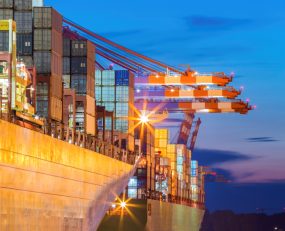
A first step has been made in creating a new deep-sea container complex in the Indian Ocean. The Indian holding company, ‘India Ports Global’, assumed responsibility for areas of the Port of Chabahar last week as part of a programme to build Iran’s first major container facility. The objective is to create a terminal capable of taking ultra-large post panama vessels unlike Iran’s present leading port, Bandar Abbas, in the Gulf which cannot take ships larger than 11,000 TEU.
In 2017 the Indian and Iranian governments agreed a programme to build a new terminal with two berths operated under a ten-year lease. The overt reason that India is interested in building ports is fear of growing Chinese influence, especially in Pakistan as well as Iran.
However, the politics can obscure the underlying economics. Iran is an important trading partner for India, largely due to India’s widening appetite for oil and gas. India is growing rapidly and is increasing its previously modest presence in global trade. This demands logistics infrastructure. India needs to access markets not just in the West but also in South East Asia and Central Asia. With China appearing to dominate the construction of new logistics resources in nations such as Iran, India is fearful that it might become dependent on China economically.
Such fears may be exaggerated, however it reflects a growing need for logistics infrastructure that supports India’s economy outside the country as well as inside India. The development at Chabahar has been paralleled with growing talk of Indian centred air-freight corridors into Central Asia and the development of rail links across Iran into the Caucasus and central Asia starting at Chabahar. So far however India has not displayed the same capability in building such facilities as China has. Talk of rail construction has been continuing for years with little to show for it, whilst China has sponsored the completion of several links to major Iranian cities.
If India’s economy is to grow as large as is suggested, it will need a web of sea, air and land connections. These will represent a new and large centre of gravity in freight transport. If India cannot build them someone else will have to.
Source: Transport Intelligence, January 15, 2019
Author: Thomas Cullen